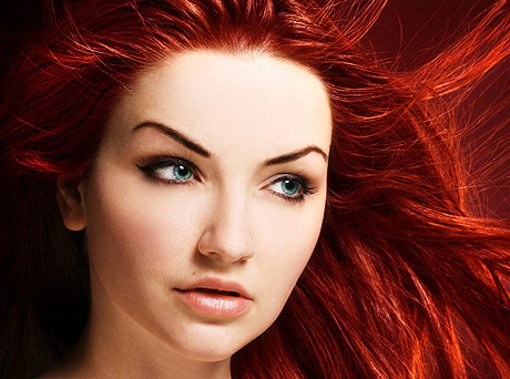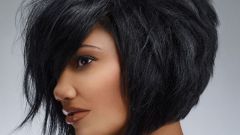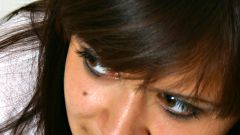How color hair henna and artificial dyes
Henna is a powder muddy marshy color with characteristic odor. The composition of the leaves of lawsonite includes molecules of tannin and natural dye is orange in color, but this pigment is not visible in the powder, as it overshadows the chlorophyll. But if you grind the leaves and dissolve them in water, and even better in an acidic liquid such as lemon juice, the cell membranes dissolved, the dye is released.
If the henna applied to the hair, the released colorant begins to flow into the hair shaft, where it connects with the keratin. Thus, henna penetrates into the hair structure, tannin molecules closely associated with the keratin on the outer layers of your hair. Therefore, henna is almost not washed off the strands of paint over time, darkens slightly, but clings to wash it extremely difficult.
Thanks to its ability to penetrate the hair and contact with a keratin henna strengthens the hair, making it thicker and stronger.
Chemical dyes without hydrogen peroxide envelop the hair, giving it the desired color. Dye with peroxide in the composition releases at the time of staining, the oxygen, which penetrates the pigments of the hair and lightens them.
If your hair is natural color or dyed with artificial dye, the paint behaves predictably, but with vegetable pigments it goes bad: either the dye is not shown, so as can't fight with such a strong pigment, or under the influence of tannin changes its action, leading to the creation of different color, or the effect is weak and hair dye unevenly. It is difficult to predict what will effect if use dye after henna.
Chemical dye after henna
In the interaction of plant pigment henna and chemical dyes can be obtained various results are usually disappointing. In some cases, hair get unexpected colors from bright orange to green. The risk to the green color on the hair increases, if during a previous painting with henna you added Basma for a more dark and saturated colors. Even if the color in General was good, then in daylight you can notice a greenish glow to the hair.
In other cases, chemical paint good quality henna and does not give almost any effect. Many girls also complain that even when they managed to paint henna faux paint, copper colour still made itself felt. Repainted to remove the herbs or how also does not always work. However, we cannot say that the paint always leads to unpleasant consequences after the henna.
Sometimes you can be lucky, and the expected effect of the paint will match with the result depending on the structure of the hair, the quality of the dye used henna and other factors.
But because the dye behaves unpredictably, going to henna, most hairdressers do not undertake to paint the hair and do not suggest to do this on their own. If you don't want to wait until the hair grows back to be painted, be sure to first make a test on a small strand in the middle of the hair to test the effect of specific dye to henna.




